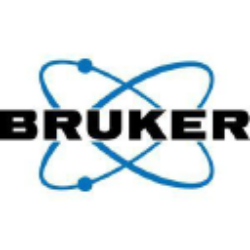Bruker Corporation develops, manufactures, and distributes scientific instruments, and analytical and diagnostic solutions in the United States and internationally. The company operates through three segments: Bruker Scientific Instruments (BSI) Life Science, BSI NANO, and Bruker Energy & Supercon Technologies. It offers life science tools, and single and multiple modality systems; life science mass spectrometry; MALDI Biotyper rapid pathogen identification platform and related test kits, DNA test strips, and fluorescence-based polymerase chain reaction technology; genotype and fluorotype molecular diagnostics kits; research, analytical, and process analysis instruments and solutions; SARS-CoV 2 testing for the diagnosis of COVID-19 infection; and Fluorotyper-SARS-CoV 2 plus kits. It also provides range of portable analytical and bioanalytical detection systems, and related products; X-ray instruments; analytical tools for electron microscopes, as well as handheld, portable, and mobile X-ray fluorescence spectrometry instruments; atomic force microscopy instrumentation; non-contact nanometer resolution solution topography; and automated X-ray metrology, automated AFM defect-detection, and photomask repair and cleaning equipment. In addition, the company offers advanced optical fluorescence microscopy instruments; products and services to support the multi-omics needs of researchers in translational research, drug, and biomarker discovery; superconducting materials, such as metallic low temperature superconductors; devices and complex tools based on metallic low temperature superconductors; and non-superconducting high technology tools, such as synchrotron and beamline instrumentation. Bruker Corporation has a collaboration with Newomics Inc. on a LC-MS platform for drug discovery. The company was incorporated in 1991 and is headquartered in Billerica, Massachusetts.

